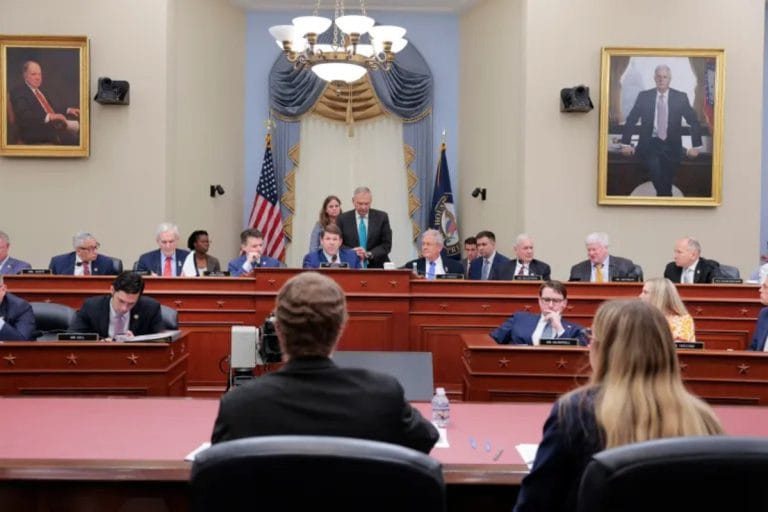🎧 Listen to This Article
In Washington’s high-stakes drama, the U.S. House of Representatives barely cleared the finish line, passing a sprawling tax and spending bill by one vote. This is not just another piece of legislation but a flashpoint for America’s deep fiscal divides, political brinkmanship, and the uncertain economic future ahead.
The Narrow Escape
A 215-214 vote, one that could have gone either way, speaks volumes. All Democrats and two Republicans voted no. Another Republican abstained, while one even missed the vote, reportedly asleep. With House Speaker Mike Johnson’s fragile 220-212 majority, every vote counted. To pull this off, Johnson juggled competing interests, tweaking Medicaid rules and expanding state and local tax deductions to appease the party’s conservatives and moderates.
But this bill is more than political math; it is a gamble with America’s financial future.
The Price Tag: A Trillion-Dollar Gamble
The bill stokes fears already simmering across Wall Street and Main Street at an eye-watering $3.8 trillion added to the nation’s debt. The U.S. debt now hovers above 124% of GDP, a red flag even Moody’s cannot ignore, evidenced by last week’s credit downgrade.
Imagine the U.S. government as a massive ship slowly taking on water. This bill does not patch the leaks; it piles more coal into the boiler, pushing the boat faster toward the iceberg.
What’s Inside the Bill?
It is a mixed bag with winners and losers:
- Winners: Corporations and wealthy individuals who see extended tax cuts from Trump’s 2017 era. Plus, a military and border enforcement spending boost would be a win for Trump’s base.
- Losers: Low-income Americans with tighter Medicaid eligibility and cuts to food assistance. Millions could lose vital support. Democrats call this a “tax scam,” and the CBO confirms the bottom 10% lose income while the top 10% gain.
- Political Chess Moves: Johnson fast-tracked Medicaid work requirements and expanded SALT deductions to appease fractious Republicans from high-tax states, a nod to internal GOP battles since 2017.
Why the Rush?
Republicans say the clock is ticking. Without this bill, the debt ceiling remains dangerously low, threatening a U.S. default that could ripple through global markets. They also warn that if the 2017 tax cuts expire, Americans will face a stealth tax increase.
But critics warn that short-term relief may deepen long-term wounds.
The Human Cost
Behind the numbers and party-line votes are millions of Americans potentially losing healthcare access or facing higher taxes down the line. The divide is not just political; it is deeply personal. For families struggling with medical bills or job uncertainty, these policies are anything but abstract.
What to Watch
- Senate showdown: Will the Senate follow the House’s razor-thin path or rewrite the bill?
- Debt trajectory: Can the U.S. avoid a fiscal crisis while balancing growth and sustainability?
- Medicaid impact: How will millions of vulnerable Americans cope if work requirements kick in?
- Political fallout: Will GOP infighting intensify as factions jockey over SALT and spending cuts?
- Market jitters: Watch for dollar strength and Treasury yields reacting to ongoing uncertainty.
This bill is not just legislation but a window into the ideological battles shaping America’s economic soul. Will the nation avoid disaster, or are we accelerating toward an iceberg? Time and Washington’s next moves will tell.
For further details, clarification, contributions, or any concerns regarding this article, please get in touch with us at editorial@tax.news. We value your feedback and are committed to providing accurate and timely information. Please note that our privacy policy will handle all inquiries.



